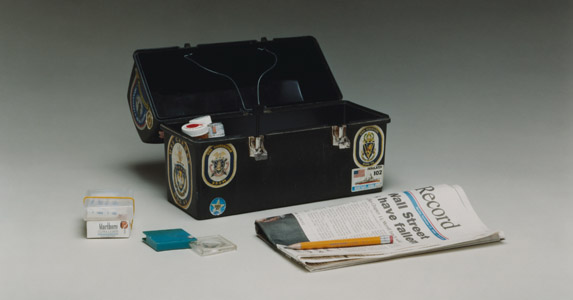Not many Bay Crossings readers are likely to remember when Luciano Pavarotti sang in the San Francisco Opera’s production of Turandot some 35 years ago, but for those of us who were there, the event was profound. Joining him in that remarkable show was the legendary Montserrat Caballé. And, oh yes, playing a bit role was the very young Carol Vaness, long before she reached diva status.

September’s performance of Turandot was simulcast on AT&T Park’s 103-feet wide Mitsubishi Electric Diamond Vision scoreboard—one of the highest quality outdoor scoreboards in the nation—making “Opera at the Ballpark” a smashing success. Photo by Kristen Loken
By Paul Duclos
Published: October, 2011
Not many Bay Crossings readers are likely to remember when Luciano Pavarotti sang in the San Francisco Opera’s production of Turandot some 35 years ago, but for those of us who were there, the event was profound. Joining him in that remarkable show was the legendary Montserrat Caballé. And, oh yes, playing a bit role was the very young Carol Vaness, long before she reached diva status.
So how can any subsequent effort measure up? Well, it can’t really, but many young opera goers will have memories of their own based on September’s performance of Turandot at AT&T Park. The event—fully accessible via ferry—featured one of the minor singers in the 1977 version. Joseph Frank, a solid tenor, was the emperor this time around, and helped make "Opera at the Ballpark" a smashing success.
Through state-of-the-art technology, the simulcast was transmitted in high definition to AT&T Park’s 103-feet wide Mitsubishi Electric Diamond Vision scoreboard—one of the highest quality outdoor scoreboards in the nation—live from the stage of the War Memorial Opera House. Concert-quality audio combined with AT&T Park’s huge screen created an unmatched operatic experience for attendees sitting in the stands and on the baseball field itself.
From October 15 through January 16, 2012, the San Francisco Museum of Modern Art (SFMOMA) will present Lunch Break, the latest body of work by Sharon Lockhart. The exhibition, organized by Sabine Eckmann from the Mildred Lane Kemper Art Museum, St. Louis, and overseen at SFMOMA by Curator of Media Arts Rudolf Frieling, will include a large-scale film installation, selected photographs, and a Bay Area edition of the artist’s free take-away newspaper, the Lunch Break Times. Through film, photography, and the print medium, Lockhart reflects on the presence of the individual in the context of industrial labor.
To create Lunch Break, the artist spent a year observing and engaging with blue-collar workers during their daily routines at Bath Iron Works, a naval shipyard in Bath, Maine. This allowed Lockhart to shed her outsider status and establish a level of intimacy and comfort with the workers. As the artist explains, "In all of my projects, I work hard to make the participants partners, so that the exchange is a personal one."
Lunch Break did not materialize without a struggle, however. Lockhart’s first attempts to enter the historic shipyard—the state’s largest private employer, owned by General Dynamics, the world’s fifth-largest defense contractor—were repeatedly rejected by the company. But, after spending time in Bath, she secured a meeting with the local union, which supported her work and successfully lobbied for her access to the factory.
The contemplation of the workers’ activities during their time off from production brings into view an everyday situation that foregrounds the presence of the individual. In contrast, the related photographic series emphasizes the actuality of individual objects, routines, and spaces: stickers on a lunchbox or the makeshift booths where workers sell snacks and various items.
Yet while Lunch Break focuses on day-to-day details, it reflects a much larger contemporary political and economic reality. The project’s focus on the local, rarely-portrayed experience of the current working class takes on a particular social and political relevance in the context of global capitalism, war and economic recession.

Sharon Lockhart, Gary Gilpatrick, Insulator, 2008; chromogenic print; 24 3/4 x 30 3/4 in.; courtesy the artist and Blum & Poe, Los Angeles; Gladstone Gallery, New York; and neugerriemschneider, Berlin; © Sharon Lockhart. Photo courtesy of SFMOMA

